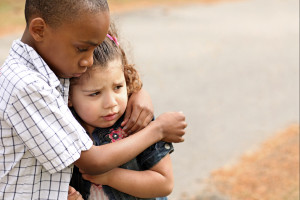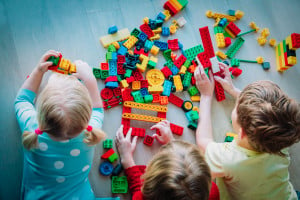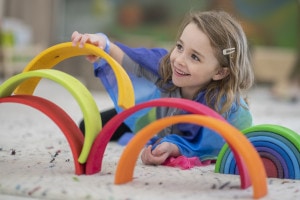We spend a lot of time thinking about how to communicate with our babies. We sing to them, read to them, talk to them, use different tones of voice. . . but what about how babies communicate with us? Believe it or not, they begin communicating with us from the moment they are born with their cry. Any new parent knows babies have a way of getting their point across. Did you know that you may hear six different types of cries from your baby? Each of them conveys a different message.
It is important to be in tune with the subtle differences in cries to meet our baby’s needs. It is also important not to squelch the cries with a pacifier when the baby is truly trying to tell us something. Most cries differ in sound, frequency, and pitch and are accompanied by other cues to help us figure out what the baby is saying (or screaming).
6 Different Cries and What Your Baby is Trying to Tell You
1. Hungry Cry
A hungry cry is typically a repetitive cry that is also rhythmic and usually accompanied by rooting or sucking on hands. Try to respond to this cry fairly quickly because if the baby gets too worked up, they end up gulping air as they attempt to eat, which results in bellyache and, you guessed it . . . more crying.
2. “I’m in Pain” Cry
The “I’m in pain” cry is a sudden onset of a high-pitched, panicked, ear-piercing cry that the baby releases in long wails, leaving them breathless. The baby will then pause between wails to gasp for air, then repeat another long, sustained, high-pitch cry. You want to respond to this cry as soon as possible as well. Try to figure out what could be causing pain and address the issue as you swaddle, rock, shush, and soothe. It is usually related to a belly ache or gas pain. Baby massage to the abdomen or bicycling the baby’s legs toward the belly can be helpful. This is when a pacifier or clean finger might be beneficial because sucking releases endorphins for babies, helping counteract any discomfort they may be feeling.
3. “I’m Stressed” Cry
Some babies are sensitive and easily stressed out, resulting in a “stress cry,” which is a general fussiness accompanied by baby turning her head away from stimuli. Try moving your baby to a calmer environment, swaddling for comfort, and using white noise to keep your baby relaxed.
4. “I’m Bored” Cry
Babies can simply be bored. This cry will start as a coo, or an attempt to get your attention, then turn into fussing and then bursts of indignant crying as they complain that they are not getting enough interaction with you. This is when NOT to use a pacifier. Pick your baby up, and give him tons of attention and cuddles. If you need inspiration, read here for ways to engage with your baby.
5. We Have Bigger Problems Cry
Of course, there is the colic cry, intense screams accompanied by rigid limbs, red face, and fidgeting movements. This often starts in the evening and can last for hours. Baby massage can help, but it should be done before the crying outburst. Placing the baby on her belly and doing bicycle exercises while on her back can also help.
6. “I’m Sick” Cry
Lastly, there is the sick cry. This might sound like soft, nasal whimpers that are lower pitch than the other cries. Check for a fever when you hear this cry.
Of course, some babies cry for no particular reason at all. They are babies, and that is what they do. It can be discouraging if baby is not easily soothed, but remember to take care of yourself first! When baby is inconsolable, lying them safely in the crib while you step out to take a few deep breaths is okay. Also, don’t feel bad about handing your baby off to a friend or family member who can relieve you for a little while. There is nothing wrong with taking a little break now and then. Soon the cries evolve into babble and words, and they become little experts at making their needs known.














